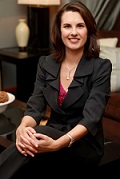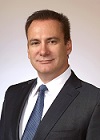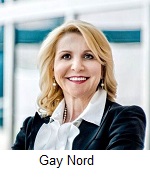
Healthcare executives are discovering numerous reasons to turn to franchise ownership. In growing numbers, they are becoming entrepreneurs, whether they are new to healthcare or grizzled industry veterans. Healthcare leaders are fulfilling important personal and career goals by investing in franchise opportunities; here we’ll discuss the most common:
1. Providing Additional Security
The healthcare industry evolves rapidly, and there's no end in sight. The industry's future remains murky with ongoing talk and political steam of substantial healthcare reform. Franchise ownership is appealing as it can provide a secondary source of income independent of your employer. If there’s a sudden change in your organization or the industry overall, you won’t have all your eggs in one basket. Whether you’re planning on continuing in healthcare for the long haul or wanting to bridge out of healthcare in the coming few years, owning a “manage-a-manager” franchise model and scaling the business over time can provide added family income to rely on and enjoy. The number of people with a business on the side is growing rapidly, and few side gigs offer the earning potential or predictability of franchise ownership.
2. Helping to Build a Nest Egg
Franchise and business ownership is also a great way to diversify your investment portfolio and prepare for retirement. You can enjoy a reliable income while building a valuable future asset that can be sold for a premium or passed as a legacy to your children. By following in the footsteps of other successful franchise owners and reinvesting profits into additional locations, you'll grow your net worth exponentially faster than putting all your savings in a mutual fund.
3. Offering a Fresh Start
Most new opportunity seekers are pleasantly surprised to discover the wide variety of franchise opportunity choices spanning 90+ unique industries. It’s definitely more than just French fries. A hefty majority of new franchise owners choose a business in a completely new industry, not related to healthcare or the sector where they’ve been employed. Your diploma and your resume do not limit your options. Many people yearn to pour their strengths and energy into a fresh, new challenge. Strong franchise opportunities with a proven business model and streamlined training systems are the bridge for thousands of new entrepreneurs to blossom in new lines of business with much less risk. It’s a vehicle to succeed at something, gain more control over your destiny, and enjoy more flexibility rarely found in a corporate executive’s lifestyle.
No matter your reasons for considering franchise ownership, you don’t have to look far for success stories. Take Carey Winkel as an example. She spent 70 hours a week working as President of Commercial Operations for Sunrise Medical before switching gears and buying a cleaning franchise. In her first four years, her region won the company's national growth award three times!
Brian Foster is another great success story. He worked as a healthcare executive for over 30 years for the Illinois Hospital Association. After contemplating his future, he met with FranNet and was introduced to the idea of owning a franchise. He’s fallen in love with being his own boss, with a thriving business that’s poised to earn income for many years to come.
If you’re trying to transition from your career as a healthcare executive (or any other career) to franchise ownership, let us help you. At FranNet, “creating success stories” is our motto. We match aspiring entrepreneurs to the right opportunities for their strengths, goals and needs. To get started, give me a call at 770-579-3726 or email This email address is being protected from spambots. You need JavaScript enabled to view it..

Leslie Kuban is a nationally recognized franchise industry expert, CFE (Certified Franchise Executive) and owner of FranNet in Atlanta; a locally owned and operated franchise consulting firm. Leslie and her team have helped close to 500 individuals and families achieve their dreams of business ownership through a no-cost, extensive educational and coaching process.
Connect with Leslie online or call 770-579-3726 to start the conversation today.
Connect with us on LinkedIn, join our Active Network Program and look at the other areas of connection we offer.
















 Enhancing our own leadership development along with the novice and advanced leaders on our teams is mission critical in healthcare today. The environment that we are challenged to be successful in is very harsh — increasing the cost of technology and pharmaceuticals, the ever-increasing cost of labor, on top of declining reimbursement.
Enhancing our own leadership development along with the novice and advanced leaders on our teams is mission critical in healthcare today. The environment that we are challenged to be successful in is very harsh — increasing the cost of technology and pharmaceuticals, the ever-increasing cost of labor, on top of declining reimbursement.

 There are likely more articles, books, blogs and seminars pertaining to Leadership than any other subject. In addition to our formal education and training as a leader, we have learned leadership traits from mentors, bosses, and other leaders over the years; we’ve learned what aspects of leadership we admire, and consider motivating and successful, AND...WHAT ASPECTS WE DON’T.
There are likely more articles, books, blogs and seminars pertaining to Leadership than any other subject. In addition to our formal education and training as a leader, we have learned leadership traits from mentors, bosses, and other leaders over the years; we’ve learned what aspects of leadership we admire, and consider motivating and successful, AND...WHAT ASPECTS WE DON’T.

